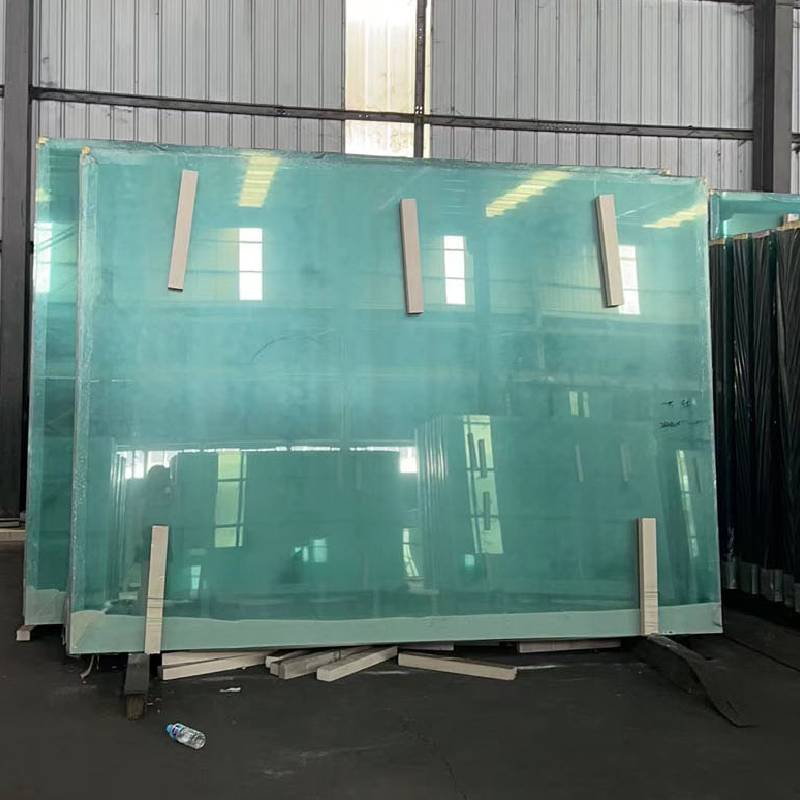The Significance of Heat Treated Float Glass in Modern Applications
Heat treated float glass, commonly referred to as tempered glass, plays a crucial role in contemporary architecture and design. This specialized form of glass undergoes a rigorous heating and cooling process, enhancing its strength and safety compared to standard glass. The significance of heat treated float glass extends across various industries, including construction, automotive, and consumer products, due to its impressive durability, thermal resistance, and safety features.
Understanding the Process
The production of heat treated float glass begins with the traditional float glass process, where molten glass is poured over molten tin to create a smooth, even surface. The difference arises when this flat glass is subsequently heated to temperatures exceeding 600 degrees Celsius (about 1,112 degrees Fahrenheit) and quickly cooled. This rapid temperature change alters the glass's internal structure, creating compressive stresses on its surface. As a result, tempered glass is able to withstand greater impacts and changes in temperature compared to regular glass.
Benefits of Heat Treated Float Glass
1. Increased Strength and Safety One of the most notable advantages of heat treated float glass is its enhanced strength. It is approximately five to seven times stronger than standard glass of the same thickness. This strength makes it particularly suitable for environments that require durability and safety—such as high-rise buildings, glass facades, and shower enclosures. In the event of breakage, tempered glass shatters into small, blunt pieces rather than sharp shards, significantly reducing the risk of injury.
2. Thermal Resistance The process of heat treatment also equips the glass with exceptional thermal resistance. Tempered glass can withstand sudden temperature fluctuations and high heat exposure, making it ideal for applications like oven doors, skylights, and glass walls in thermal environments. This thermal stability ensures that the glass maintains its integrity despite harsh conditions.
heat treated float glass
3. Design Versatility In addition to its practical benefits, heat treated float glass offers aesthetic appeal. Available in various thicknesses and finishes, it can be customized to meet specific design needs. Architects and designers often choose tempered glass for its sleek appearance, allowing for expansive views and natural light entry without compromising structural integrity.
4. Energy Efficiency The increasing emphasis on sustainability in the construction industry has led to the adoption of energy-efficient building practices. Heat treated float glass can be combined with low-emissivity (Low-E) coatings to further enhance energy efficiency. These coatings reflect heat while allowing natural light to enter, contributing to reduced energy consumption for heating and cooling.
Applications in Various Industries
The applications of heat treated float glass are vast and varied. In the construction industry, it is commonly used for storefronts, curtain walls, and protective barriers. Its ability to withstand extreme conditions allows it to be employed in outdoor settings, including pools and patios. In the automotive sector, tempered glass is essential for car windows, providing passengers with safety and a clear line of sight. In the consumer goods market, it is utilized in furniture design, shower doors, and cookware.
Conclusion
In summary, heat treated float glass represents a remarkable innovation in glass manufacturing, offering enhanced strength, safety, and design versatility. Its superior properties make it a preferred choice across multiple industries, from architecture to automotive design. As the demand for sustainable and durable construction materials continues to rise, the use of tempered glass is likely to expand, reinforcing its importance in modern applications. By understanding the benefits and applications of heat treated float glass, industry professionals can make informed choices, ultimately leading to safer and more efficient environments. As we move forward, the role of this advanced glass material will undoubtedly become even more prominent in our daily lives and built environments.
 Afrikaans
Afrikaans  Albanian
Albanian  Amharic
Amharic  Arabic
Arabic  Armenian
Armenian  Azerbaijani
Azerbaijani  Basque
Basque  Belarusian
Belarusian  Bengali
Bengali  Bosnian
Bosnian  Bulgarian
Bulgarian  Catalan
Catalan  Cebuano
Cebuano  Corsican
Corsican  Croatian
Croatian  Czech
Czech  Danish
Danish  Dutch
Dutch  English
English  Esperanto
Esperanto  Estonian
Estonian  Finnish
Finnish  French
French  Frisian
Frisian  Galician
Galician  Georgian
Georgian  German
German  Greek
Greek  Gujarati
Gujarati  Haitian Creole
Haitian Creole  hausa
hausa  hawaiian
hawaiian  Hebrew
Hebrew  Hindi
Hindi  Miao
Miao  Hungarian
Hungarian  Icelandic
Icelandic  igbo
igbo  Indonesian
Indonesian  irish
irish  Italian
Italian  Japanese
Japanese  Javanese
Javanese  Kannada
Kannada  kazakh
kazakh  Khmer
Khmer  Rwandese
Rwandese  Korean
Korean  Kurdish
Kurdish  Kyrgyz
Kyrgyz  Lao
Lao  Latin
Latin  Latvian
Latvian  Lithuanian
Lithuanian  Luxembourgish
Luxembourgish  Macedonian
Macedonian  Malgashi
Malgashi  Malay
Malay  Malayalam
Malayalam  Maltese
Maltese  Maori
Maori  Marathi
Marathi  Mongolian
Mongolian  Myanmar
Myanmar  Nepali
Nepali  Norwegian
Norwegian  Norwegian
Norwegian  Occitan
Occitan  Pashto
Pashto  Persian
Persian  Polish
Polish  Portuguese
Portuguese  Punjabi
Punjabi  Romanian
Romanian  Russian
Russian  Samoan
Samoan  Scottish Gaelic
Scottish Gaelic  Serbian
Serbian  Sesotho
Sesotho  Shona
Shona  Sindhi
Sindhi  Sinhala
Sinhala  Slovak
Slovak  Slovenian
Slovenian  Somali
Somali  Spanish
Spanish  Sundanese
Sundanese  Swahili
Swahili  Swedish
Swedish  Tagalog
Tagalog  Tajik
Tajik  Tamil
Tamil  Tatar
Tatar  Telugu
Telugu  Thai
Thai  Turkish
Turkish  Turkmen
Turkmen  Ukrainian
Ukrainian  Urdu
Urdu  Uighur
Uighur  Uzbek
Uzbek  Vietnamese
Vietnamese  Welsh
Welsh  Bantu
Bantu  Yiddish
Yiddish  Yoruba
Yoruba  Zulu
Zulu 

